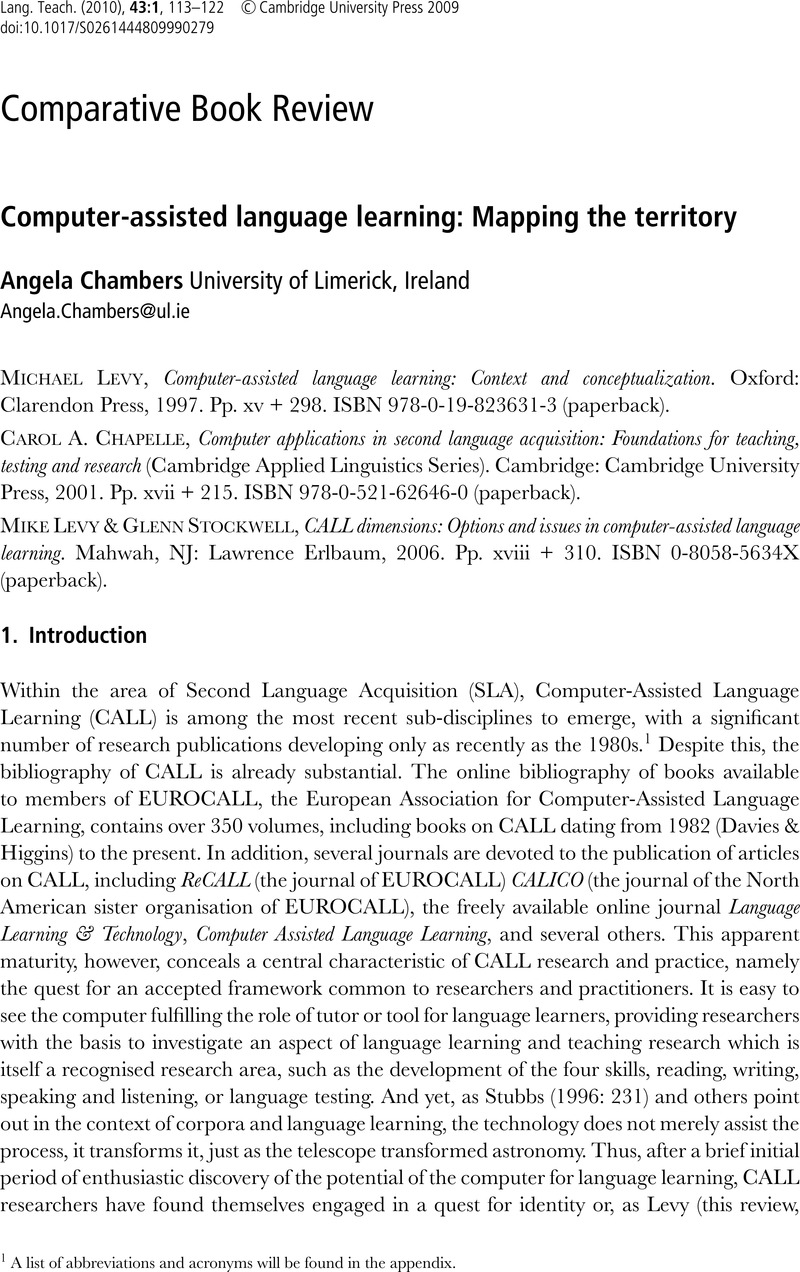Article contents
Computer-assisted language learning: Mapping the territory - Michael Levy, Computer-assisted language learning: Context and conceptualization. Oxford: Clarendon Press, 1997. Pp. xv + 298. ISBN 978-0-19-823631-3 (paperback). - Carol A. Chapelle, Computer applications in second language acquisition: Foundations for teaching, testing and research (Cambridge Applied Linguistics Series). Cambridge: Cambridge University Press, 2001. Pp. xvii + 215. ISBN 978-0-521-62646-0 (paperback). - Mike Levy & Glenn Stockwell, CALL dimensions: Options and issues in computer-assisted language learning. Mahwah, NJ: Lawrence Erlbaum, 2006. Pp. xviii + 310. ISBN 0-8058-5634X (paperback).
Published online by Cambridge University Press: 10 December 2009
Abstract

- Type
- Comparative Book Review
- Information
- Copyright
- Copyright © Cambridge University Press 2009
References
- 3
- Cited by


